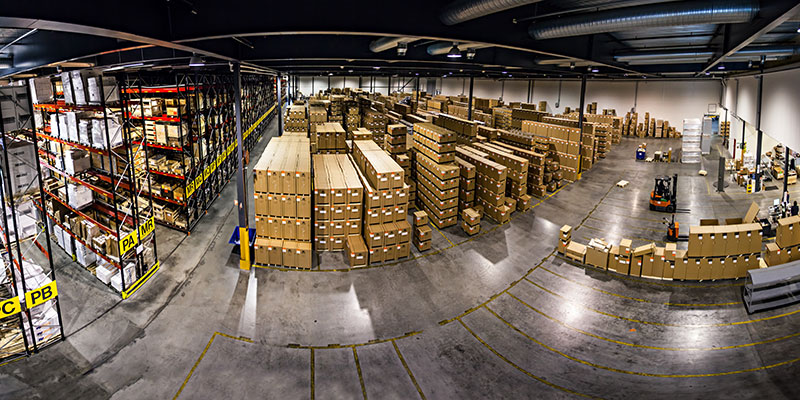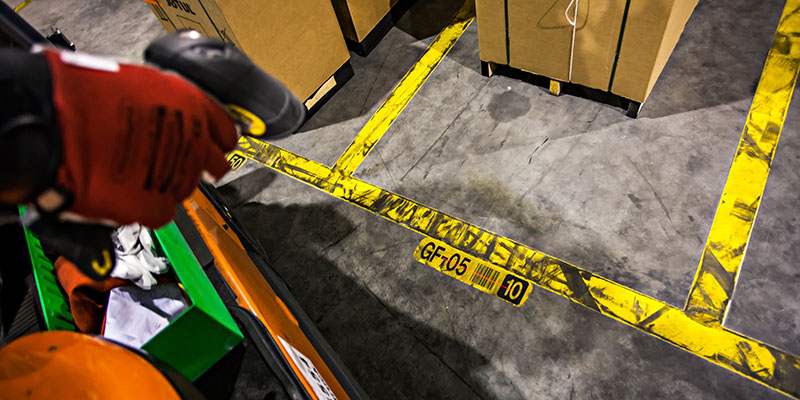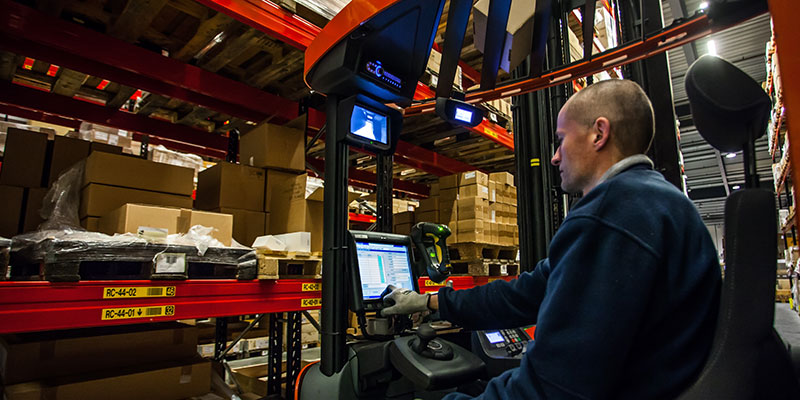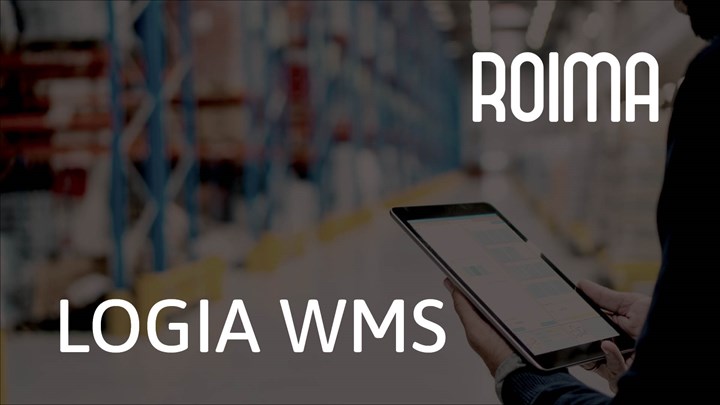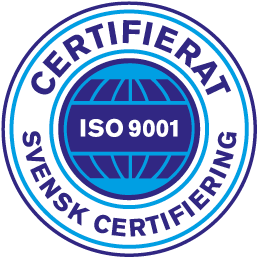Jøtul: WMS digitizes large warehouse project and increases efficiency by 30%
Jøtul AS is one of the world’s leading manufacturers of stoves, inserts and fireplaces. The company has its factory and warehouse in Fredrikstad in Norway. Jøtul’s factory and warehouse were in two separate locations. It went without saying that this implied substantial extra coordination, unnecessary handling, extra transport, and extra use of time.
Jøtul’s goal was to maintain production in Norway. This required greater streamlining of procedures and processes. The warehouse was one area, where there was potential to make significant improvements.
The warehouse and control situation before
The existing warehouse was a huge, manual warehouse with permanent locations and old-fashioned paper pick lists that were printed from Lawson M3. The warehouse was staffed with 38 warehouse workers in the high season (August-February) and 27 warehouse workers in the low season. The work in the warehouse included searching for the right goods and administrative work in the shape of paper picking list reporting and was very time-consuming. Performance-wise the warehouse had a picking efficiency of about 50 order lines per day per person and an error rate of 0.5%.
The realisation of Jøtul’s goal required many changes to the warehouse situation. The first major move was to eliminate the excessive handling that was associated with the two separate sites. Within the warehouse, there was a need for increased efficiency, but this required more than simply running faster.
Major warehouse project
Jøtul initiated a major warehouse project, which involved merging the warehouse with the factory on the actual factory site and optimising all processes in the warehouse. The latter meant investing in new technology in the form of a specialised warehouse control machine and the introduction of automation.
They built a huge, 10,000-m2 warehouse equipped with storage for intermediate goods for production, storage for end products, and a shipping area.
The new warehouse comprises the following manual and automatic areas:
- 10 vertical storage lifts
- Pallet storage with 1,376 locations
- Mobile shelves with 5,328 locations
- Block stacking storage with 356 locations
- Goods reception
- Packaging and shipping area
The entire warehouse is controlled by the LOGIA WMS warehouse management system.
WMS with integration to M3
One of Jøtul’s crucial points in the warehouse project was to have a specialised warehouse management system, which could be fully integrated with their M3 ERP system. They chose LOGIA WMS, which has a default interface for M3.
In an interview with the Norwegian magazine Moderne Transport, Jøtul said:
“Jøtul has also introduced Roima’s Warehouse Management System. Among other things, the Logia WMS software controls storage machines and other warehouse activities. We previously had a general ERP system (Lawson M3). In other words, a system that “can be used for everything, but which is not particularly good at anything.” We have a completely different level of control now. The integration of Logia WMS with Lawson M3 went well after the usual teething troubles were dealt with. LOGIA was not the cheapest software we could have chosen, but it scored very well on user interface, which was crucial for us.”
The warehouse management system controls the entire warehouse, from goods reception to shipping. All locations, products, staff, hours, orders etc. are managed and implemented using LOGIA WMS. The system guarantees that the capacity, in terms of the vertical storage lifts and manual storage areas, is put to the very best use – both in relation to storage space and the efficiency of placing and picking. LOGIA WMS also ensures excellent flow throughout the entire warehouse.
Picking efficiency increased by 30%
Parallel picking takes place in the various storage areas. This provides excellent flow in the warehouse, and picking efficiency has increased by 30%, while the error rate has dropped to 0.1%. The increase in efficiency is the result of a rethinking of all Jøtul’s processes: elimination of unnecessary handling; good systematisation and control of all warehouse processes; and the introduction of automation in the form of vertical warehouse lifts.
LOGIA manages and divides the orders into the three storage areas (vertical storage lifts, pallet storage and mobile shelving), so orders can be picked in parallel. After picking, LOGIA WMS controls the consolidation of the orders prior to shipping.
The picking routes have been optimised, so jobs get done as efficiently as possible. All transactions are scanned and recorded, so errors are detected during the process and corrected.
All warehouse employees are online on LOGIA WMS. Regardless of where someone works in the warehouse, s/he is guided by LOGIA WMS and everyone has access to relevant information. All employees report back on an on-going basis in LOGIA WMS. That means that the current status of the warehouse and the progress of the day’s orders are constantly visible.
Vertical storage lifts incl. picking carts
The vertical storage lifts constitute the most efficient aspect of the warehouse. The lifts deal with all small items for production and sale – a total of about 6,500 locations.
Previously, several warehouse employees worked all day long, picking small items. Today, one man takes care of picking all small items from the 10 vertical storage lifts. The picks in the vertical storage lifts are assembled and executed in 1-2 picking rounds per day. On most days, picking orders in the lifts can generally be carried out in 3-4 hours.
The vertical storage lifts are equipped with touch screens and ‘Pick-to-light’ displays to streamline the picking and eliminate sources of errors. The automatic storage and retrieval area is also equipped with specially developed mobile picking carts, which can contain 12 order boxes. They are equipped with ’Put-to-light’ displays and touch screens. Picked goods are consolidated into a batch of up to 12 orders at a time, after which the goods are distributed to order boxes on the picking cart. This saves on a lot of small picking tasks and unnecessary steps between the machine and the picking cart.
VMI warehouse for subcontractors
Jøtul is in charge of a VMI warehouse for some of their subcontractors. Subcontractors own the goods until they are picked for Jøtul’s customer or manufacturing orders. Only when a VMI warehouse item is picked does it get transferred to Jøtul’s stock.
The VMI stocked items are stored together with Jøtul’s other range, and in the actual picking process there is no difference between picking a regular stocked item or a VMI stocked item. A picker neither knows nor notices when s/he is picking VMI goods.
Planning and overview
Good planning and good overview are the key words for a well-run warehouse. Jøtul’s warehouse manager makes very active use of the LOGIA WMS planning module. Orders are prioritised according to shipping date or manufacturing date and then made available for activation.
The warehouse manager can constantly see the progress of the orders and when the picking is likely to be completed with the current staffing and activity level. That means it is easy to re-allocate resources and ensure that orders are ready for shipment at the correct time
Online and simple information
LOGIA WMS has a visual interface that is very intuitive and simple to understand and learn. The simple communication ensures a minimum of errors. At the same time, it provides great flexibility in the warehouse. You can easily switch between and vary tasks. Relevant information is displayed on the screen, while all jobs and feedback take place directly in LOGIA WMS as part of the work process. It is simple and easy, and it replaces paper picking lists and the subsequent reporting.
Read more about Jøtul.




